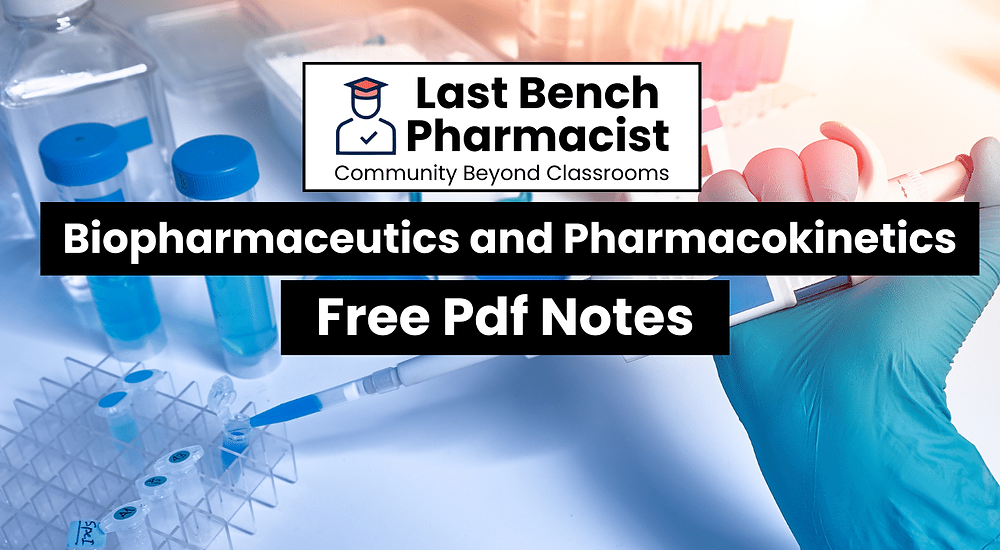



B Pharm Biopharmaceutics and Pharmacokinetics PDF Notes? Ditch the stress and grab your curiosity, because this is where we unlock the secrets of how drugs travel through the body like microscopic adventurers! Imagine that crucial medication you take – this unit equips you to understand its entire journey, from absorption in the gut to reaching its target site and, eventually, leaving the body. Think of it as being a detective tracking a molecule’s mission, using cutting-edge science to predict how factors like your body chemistry and the drug’s form can affect its effectiveness. We’ll delve into the fascinating world of absorption, distribution, metabolism, and excretion (ADME) – a mouthful, but with immense power in understanding how medications work. It’s not just memorizing equations; it’s about using them to personalize drug regimens, optimize treatment plans, and ultimately, ensure patients receive the most benefit from their medications.
Scope:
This subject is designed to impart knowledge and skills of Biopharmaceutics and pharmacokinetics and their applications in pharmaceutical development, design of dose and dosage regimen and in solving the problems arised therein.
Objectives: Upon completion of the subject student shall be able to
Understand the basic concepts in biopharmaceutics and pharmacokinetics and their significance.
Use of plasma drug concentration-time data to calculate the pharmacokinetic parameters to describe the kinetics of drug absorption, distribution, metabolism, excretion, elimination.
To understand the concepts of bioavailability and bioequivalence of drug products and their significance.
Understand various pharmacokinetic parameters, their significance & applications.
Introduction To Biopharmaceutics
Absorption: Mechanisms of drug absorption through GIT, factors influencing drug absorption though GIT, absorption of drug from Non per oral extra-vascular routes
Distribution: Tissue permeability of drugs, binding of drugs, apparent, volume of drug distribution, plasma and tissue protein binding of drugs, factors affecting protein-drug binding. Kinetics of protein binding, Clinical significance of protein binding of drugs
Elimination
Drug metabolism and basic understanding metabolic pathways renal excretion of drugs, factors affecting renal excretion of drugs, renal clearance, Non renal routes of drug excretion
Bioavailability and Bioequivalence
Definition and Objectives of bioavailability, absolute and relative bioavailability, measurement of bioavailability, in-vitro drug dissolution models, in-vitro-in-vivo correlations, bioequivalence studies, methods to enhance the dissolution rates and bioavailability of poorly soluble drugs.
Definition and introduction to Pharmacokinetics, Compartment models, Non compartment models, physiological models, One compartment open model.
(a). Intravenous Injection (Bolus)
(b). Intravenous infusion and
(c) Extra vascular administrations. Pharmacokinetics parameters – KE ,t1/2,Vd,AUC,Ka, Clt and CLR- definitions methods of eliminations, understanding of their significance and application
Multicompartment models: Two compartment open model. IV bolus Kinetics of multiple dosing, steady state drug levels, calculation of loading and maintenance doses and their significance in clinical settings.
Nonlinear Pharmacokinetics:
a. Introduction
b. Factors causing Non-linearity
c. Michaelis-menton method of estimating parameters, Explanation with example of drugs.